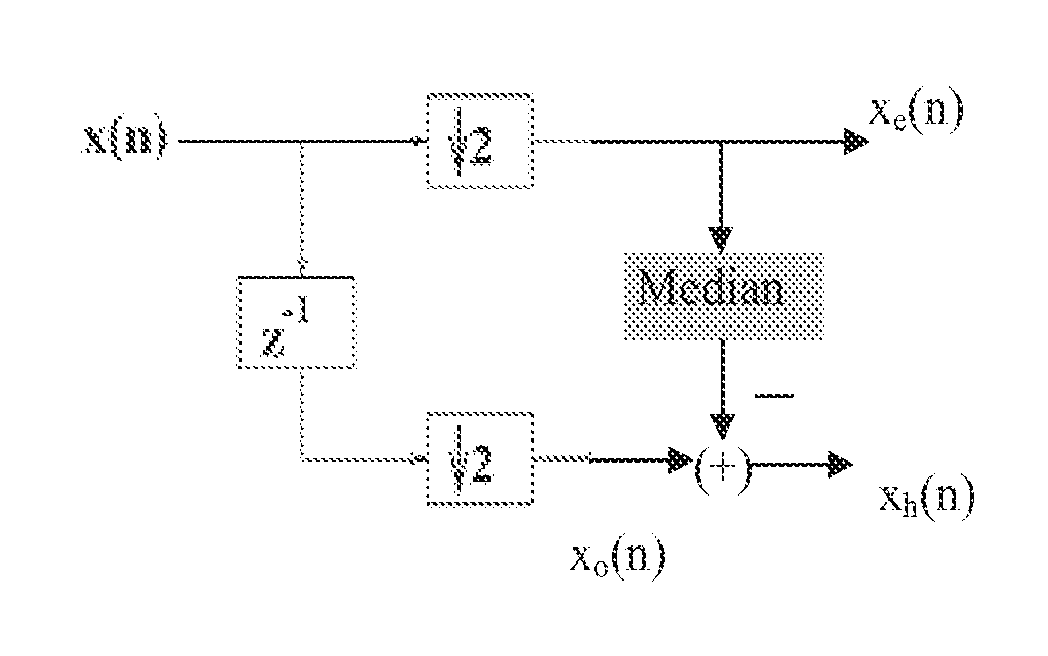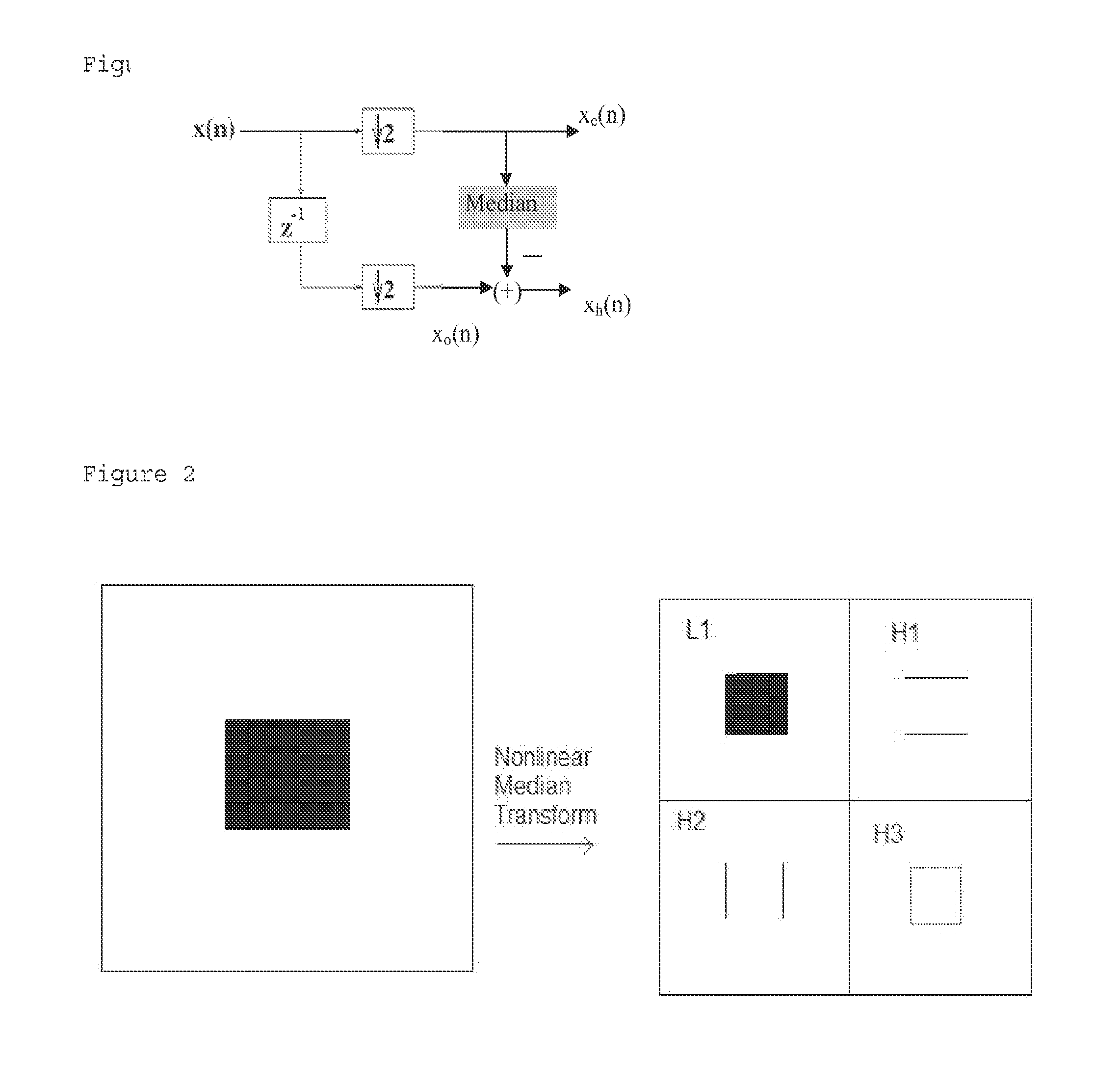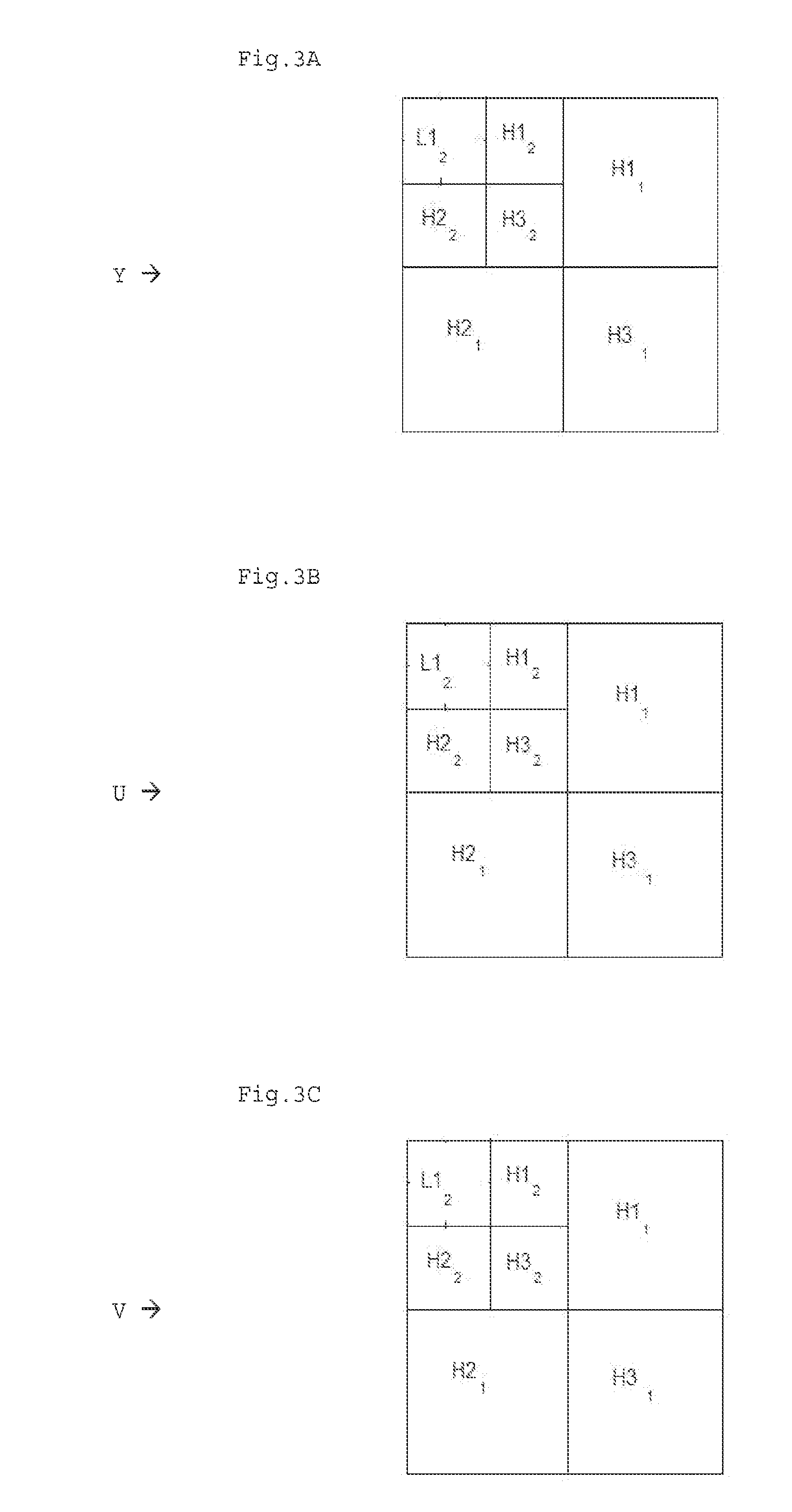Method and system for smoke detection using nonlinear analysis of video
- Summary
- Abstract
- Description
- Claims
- Application Information
AI Technical Summary
Benefits of technology
Problems solved by technology
Method used
Image
Examples
Embodiment Construction
[0023]The method of the invention constructs a 2-D nonlinearly filtered background image from a plurality of image frames and monitors the changes in some parts of the image by comparing the current nonlinearly filtered image to the constructed background image. This 2-D image and image frame analysis method of subband energy definition is distinct from the approach taken by Thuillard. Thuillard uses a Euclidean norm requiring squared sums, and cannot locate the exact location of the fire because his method makes use of a 1-D sensor output signal. The present invention does not use any multiplications. It uses median filtering and l1-norm requiring only absolute values, which is computationally much faster than Euclidean norm based energy calculations. Furthermore the approach of the present invention uses hidden Markov model (HMM) technology as the decision engine to detect fire within the viewing range of the camera. Also, the 2-D nonlinear image analysis of image frames makes it ...
PUM
 Login to View More
Login to View More Abstract
Description
Claims
Application Information
 Login to View More
Login to View More - R&D
- Intellectual Property
- Life Sciences
- Materials
- Tech Scout
- Unparalleled Data Quality
- Higher Quality Content
- 60% Fewer Hallucinations
Browse by: Latest US Patents, China's latest patents, Technical Efficacy Thesaurus, Application Domain, Technology Topic, Popular Technical Reports.
© 2025 PatSnap. All rights reserved.Legal|Privacy policy|Modern Slavery Act Transparency Statement|Sitemap|About US| Contact US: help@patsnap.com



